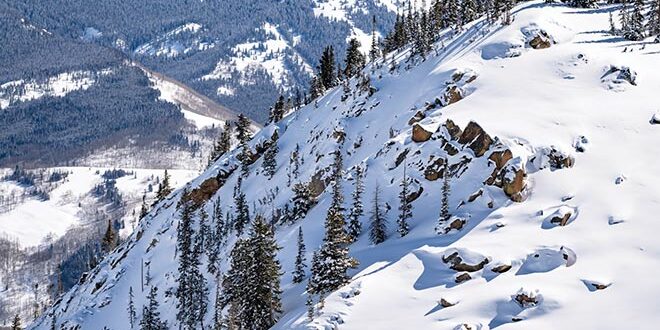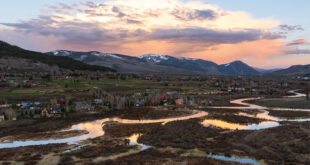One problem with talking about affordable housing is that it too often separates that housing issue from the broader community. It is easier to stay in a silo and simply consider numbers that solve a math problem but ignore nuance of long-term impacts and creative solutions. The idea of building pockets of housing for workers is a change to the way this community has worked in the past. It might now be the new necessity, but it doesn’t come without consequences and can be done thoughtfully to take a holistic view of community.
Not that long ago (okay it’s been years) many typical workers could afford to purchase property somewhere in the North Valley. That opportunity integrated workers with the entire community. The waiter could live next door to the business owner and a second homeowner. Neighborhoods were economically diverse. Now, not so much. A teacher or even most successful business owners will not be able to afford a home in Crested Butte when average prices are deep into seven figures and even dirt is selling for more than a million bucks.
So, the need for pockets of housing for workers who want to live here is a necessity but the challenge is to make sure those pockets are integrated into the broader community. As we watch real progress with the town’s Sixth and Butte and the county’s Whetstone affordable housing projects, the key is to be realistic about what can be built for a quality community development. The key is to make the projects vibrant neighborhoods that provide those that want to live here but have to work here, to experience a good life. The key is to not simply construct a bunch of serf cities where the waiters and teachers and plow drivers are housed to serve the people with money that live in the valley. It would be a mistake to sacrifice quality for quantity.
The key is to be realistic and admit that not everyone who wants an under market priced home in a beautiful place will get one. But those that do should have the opportunity to really live the life this place offers. Not everyone should get a subsidized 1,800-square-foot home with a backyard for the dog. New density is certainly warranted but a variety of housing options need to be considered in the broad plan of housing essential workers across the North Valley. Small apartments to more spacious condos to small single-family homes should be available so that members of the working community can thrive for a life and not just a couple of seasons.
The saying that ‘you can’t build your way out of the problem’ rings true because if for example you build a project that houses 500 new residents in Whetstone those people need classroom space and teachers for their children, they need places to park near work or alternative ways to easily get to work, they need plow drivers to clear their roads, bartenders to serve them drinks, EMTs to help them in crisis and on and on. In too many mountain towns the solution is to just build more housing for workers to address those needs and the cycle never ends. It is simple siloed math.
Perhaps the key is to redefine what and how to address workforce housing because to be successful it is much more than a single silo. Define the need as preserving essential community instead of simply providing unlimited workforce housing. Essential community covers a wide range of people from dishwashers to ski instructors to ranch workers to doctors to business owners to second homeowners. But the basic foundation is first made up of the workers everyone depends on to keep the community ticking: teachers, EMT and ambulance drivers, cops, firefighters, healthcare providers, plow drivers, bus drivers and so on. It expands from there.
Ideas:
—First, determine if the community is ready to build so much additional housing that the small-town, intimate elements of the current community disappear as a result. Initial Community Compass feedback is that most everyone wants to maintain the current intimate, small-town vibe so that should be an underlying driver with any development.
—One way to better integrate all kinds of workers into the broader community even as free market prices push out the local blue and white collars, is to implement town and county regulations that mandate ADUs (Accessory Dwelling Units) be included in any out building on any new home construction in Crested Bute or the county. Maybe it kicks in if a house meets a minimum square footage. In other words, if someone building a (large) house wants a garage, it has to come with at least a small residential apartment. Change the current rules to make it easy and enticing for homeowners. Whether it can be forced to be rented would have to be determined by the lawyers but putting more deed-restricted ADUs into every neighborhood in the upper valley will help sustain the broader community. It seems to me that is a start in new growth helping to pay its own way.
—Private business must step up and provide some of their own units and not just support public housing projects through things like master leases. That is happening to some degree but not enough. The largest employers need to have their own places even if on public parcels like Lazy K to house their own seasonal and year-round employees.
—Any new subdivision in the towns or county should include major deed-restricted housing units. Think 30 or 40% of a development and those units should be sold and/or constructed in tandem with the free-market units and not pushed off to the end.
—The bigger projects like Sixth and Butte and Whetstone should be designed with livability at the top of the priorities. Do not construct serf cities based simply on what the data says is needed by private business to fill job positions but rather construct neighborhoods that encourage community first even if some busser positions continue to go unfilled.
—Build projects that maintain local control. I’m not talking design review but who is prioritized as a resident. A comment at the last CB council meeting on Sixth and Butte was whether there was a real difference in the community between an artist and a dispatcher. No doubt both matter and contribute, but when I’m having a medical emergency I want a local dispatcher involved and not an artist. If we can have both – perfect — but if we can choose given limited capacity, do it based on community impact and service and not just income and AMIs.
—Perhaps the second homeowners that talked about making contributions to help housing last fall can figure out financial paths to make the larger projects work for this community instead of having to rely on overly restrictive government tax incentive programs like LIHTC projects. The fewer the restrictions from entities that don’t understand this place the better. Get creative.
—Some rogue town council in the ‘90s put a mobile home park at the entrance to town that people claimed would ruin the place. It didn’t. And many of the original contributing community members still live there…affordably. Sort of the same with the modulars in Poverty Gulch. Perhaps don’t rule out old school with modern versions of the same seed along with strategic landscaping?
—Consciously address things like school expansion needs, recreation needs, transportation needs and small-town community opportunities as local housing expands. It might be very appropriate for some public land on say the Brush Creek parcel to be used for some sort of school expansion and not strictly for more housing.
—Change the thinking to develop quality community, not simply more houses and growth.
Between the continuous general housing conversations and all the master planning discussions taking place in the valley, the early cream rising to the top of it all is that everyone seems to want to preserve the best parts of small-town community. The desire to remain a place that is small, intimate and connected appears to be a primary outcome desired by most. Sounds right and housing locals across the valley near their work is a giant integrated part of that goal.
In my view, the next key in maintaining the small-town quality community is to not simply build more and more beds for servants but to dig deep and find the unique path that maintains a community we want to live in…as we inevitably grow. And we will grow. Finding the path won’t be easy, but it might start by consciously choosing to grow local housing that enhances quality over quantity.
—Mark Reaman
P.S.: The discussions are ramping up and Crested Butte’s Community Compass project is leading the way to try and keep engagement happening and conversation flowing. We’ll help over the next five weeks by putting out various discussion topics on the front masthead of the paper. The idea is for you to consider those topics and then talk about them. Debate the issues at the bar, on the chairlift or over the kitchen table. Do not shy away from the hard conversations. It would be good for the avid recreationists to engage with the long-time ranchers to figure out the best way to develop new trails in the valley for example. That will not be an easy conversation, nor should it be. That’s why it might actually work.
And then share your conclusions with your government officials or elected friends. Give them something to think about. That too is part of small-town community.
 The Crested Butte News Serving the Gunnison Valley since 1999
The Crested Butte News Serving the Gunnison Valley since 1999






